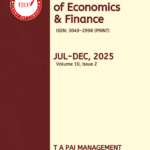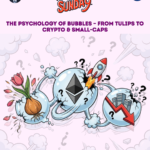“It’s not how much money you make, but how much money you keep.” – Robert Kiyosaki
Saving is a dominant factor when it comes to policy-making decisions. We all do save money for unforeseen circumstances in different forms. The worth of money demanded today is not the same as that in the future. It is comparatively lesser due to inflationary pressure and other factors. Therefore, people expect a positive return on their investments or savings.
But, imagine a bank paying negative interest. Crazy as it sounds, the world of banking is experiencing a revision with the central banks of some major economies offering zero or negative interest rates. Unlike the traditional approach where the lenders were being paid for lending money, the reverse is seen into effect. This trend got the ball rolling with Nationalbanken, the central bank of Denmark, which has been charging negative interest rates since 2012. The same was followed by the European Central Bank two years hence. Soon, Switzerland, Sweden, Japan and Hungary also adopted the same policy.
Back in the nineteenth century, Silvio Gesell proposed the theory of negative interest rates for situations of an economic slump. Severe downturns require ample monetary policy accommodation through interest rate cuts. In times of deflation, people tend to hoard cash instead of looking out for avenues to invest. This steers poor demand, lower production, fall in price and a rise in unemployment. To combat this situation, quantitative easing and negative interest rates are followed to stimulate growth. But, breaking the zero lower bound comes at a cost, mostly inflation. In the middle of mixed opinions around the globe, penalizing the investors for parking funds with negative interest rates has been regarded as the last option to boost the economy. It reduces the cost of borrowing in the market, incentivizes risk-taking and boosts the spending in the economy.
On the contrary, apart from inflation, negative interest rates also reduce the margin between the borrowing and the lending rate, thereby reducing the profit earning capacity of the banks. Since borrowing becomes cheap, companies may resort to buying back of shares, making fewer shares available in the market and creating pressure on the share prices which in the future may lead to lesser investments in projects. Given the increase in the risk-taking capacity of the borrowers, it creates a pneuma of borrowing more than what one can repay. Such rate cuts for a long period creates confusion in the market for valuation of assets and liabilities. Finally, it may lead to instability in the country.
Negative interest rates are a draconian measure which shows that the policymakers are afraid of the economy falling into a deflationary spiral. What’s crucial is that the negative rates on short-term debt spread on to longer-term bonds that have a larger effect on consumer and business borrowing. At present, there are roughly $16 trillion of negative-yielding bonds out in the global bond market.
If negative interest rates have so many flaws, why all the controversy? The answer, of course, is that the case isn’t that strong. Some technical and political factors may hinder success. In some countries, zero-interest policies seem to have sparked some additional lending, but quite slowly. The fear of the possibility that the banks would attempt to liquidate their inactive assets and purchase positions in more liquid assets to avoid the penalty interest rates on their reserves has so far been muted. This would weaken banks’ profitability without necessarily spurring economic growth. What ultimately matters most is the public reaction which may be out of the ordinary. Banks are scared of triggering public-relations disaster. But if the negative rates aren’t passed along to depositors, their effectiveness in stimulating spending may be minimal.
Possibility of Negative Interest Rates in India: Among all the countries with negative interest rates, Hungary is the only emerging country to adopt it. The success of Denmark and Sweden cannot be replicated in other parts. Authorities in Denmark and Sweden were clear on the outcome since they did not leave any scope for the people to escape. The central banks of Japan, Sweden, and Denmark charged the deposits instead of rewarding only for a proportion of deposits held by commercial banks, unlike what ECB followed.
Focusing on our country, RBI had cut its small savings deposit rate, which was an obstacle in lowering the lending rate before. The report presented by State Bank Ecowrap showcased that most banks were unwilling to lend, provided the already adverse scenario of loans in India. From the analysis of 26 banks, the deposits have grown by a meager 1.6%. The credit growth in the country has suffered a decline, even when the RBI has constantly been reducing their lending rate. For a country like India, where inflation rates are already nearing 4% and global oil prices have dropped almost $60 per barrel, the policy of negative interest rates may not stimulate growth and development. Learning from the adverse results of Japan’s Abenomics policy and ECB, the rate cuts will only lower the profits of the banks which they will try to recover by charging the depositors, sooner or later. Below zero rates, when passed on to the retail depositors, might trigger withdrawal from the accounts and hoardings of cash. Various analysts and economists opine that slashing of rates below zero will not be fruitful in the long run, especially in countries that are highly dependent on cash.
Written by – Harsh Goyal (Section 6, PGP1)

















Leave a comment